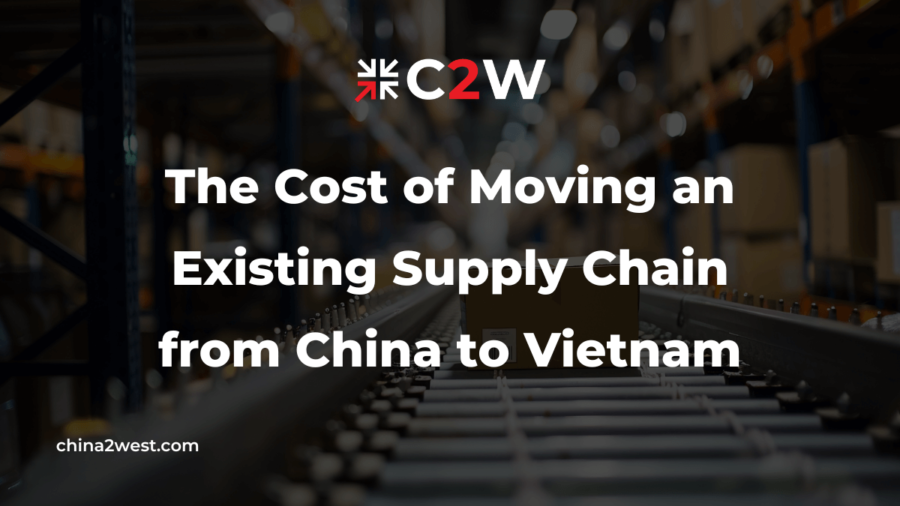It’s easy to focus on revenue charts and forecasts and the potential to make more sales.
But have you considered the profit opportunities of lowering costs and improving efficiency? It’s not as glamorous, but the potential is immense.
Take your supply chain, for example. Few companies have fully optimized every aspect of their end to end supply chain.
Nevertheless, some work there could help revolutionize your business and make you highly competitive in your industry. Read on to learn more about how to streamline it.
The Basics of Supply Chains and Why It Matters
Supply chain management covers every step between manufacturing and delivering a product to the customer. That includes material sourcing, testing, shipping, and everything in between.
It’s a process with many parts, which is why it’s worth streamlining. Doing so saves you time and money and makes you more competitive as a business.
To do that, you need to single out the points in your chain that aren’t efficient and improve them.
Using Technology to Streamline Your Supply Chain
Advanced technical solutions are the obvious place to start when streamlining your supply chain. They can make each touch point more efficient and accurate.
Take AI, for example. AI can use algorithms and vast amounts of data to make predictions more accurate than humans.
That can help in several ways. For example, you can use AI technology to predict demand to help reduce stock in your warehouse – creating a Just In Time style approach.
Or you can use AI to plan transportation for goods, for example, optimizing shipping to reduce costs.
You can also use technology to help with things like stock monitoring, reducing the need for manual counting, and helping to avoid errors.
Technology can also help on the customer side of the supply chain, like automated shipping notifications and delivery tracking.
Improving Your Inventory Management
When examining the eCommerce supply chain, look closely at how you manage your inventory.
You can often spot some improvements there. For example, do customers complain about items being out of stock? Or are you throwing away perishable goods because you don’t sell them in time?
You can analyze your customers’ purchasing behavior to improve your inventory methods.
For example, look for buying trends if you have high-demand items often listed as out of stock. Is it a seasonal problem?
Likewise, analyze your inventory waste to determine the most significant difficulties. Are you overpredicting sales on some items that spoil in the warehouse?
The trick with inventory management is to get as much data as possible on your customer patterns and trends. That will help you streamline inventory management and use your warehouse space better.
Review Your Transport Arrangements and Logistics
Look at the routes and vehicles you use for transporting raw materials and finished goods. You may find different ways of scheduling and loading could save you money and time.
Data analytics will help you there, especially if you use modern transportation technology to track your goods. For example, fewer but larger deliveries of raw materials might be a better option for your business.
Think about the types of vehicles you are using, too. Fuel costs are expensive and rising.
Could you switch to alternative methods for a faster and cheaper solution? Perhaps you need to consider the carriers you use and whether there are better alternatives to streamline a supply chain.
Alternatively, you could negotiate with your existing logistics partners to find a better deal that’s either cheaper or more efficient for your business.
Review Your Supplier Relationships
Strong supplier relationships will allow you ample opportunities to streamline your supply chain. You can work with suppliers to find better ways to deliver materials to your business.
Why not create a joint team? It’s the best way to strengthen relationships with existing suppliers.
This team can collaborate via regular meetings to solve problems, share data, and innovate.
For example, you create and run a joint development team to reduce packaging. That will lower costs and make shipping more straightforward and efficient.
It can be a win-win for both parties, as it helps suppliers foster a stronger and longer-lasting relationship with their most important customers.
Revamp Your Risk Management Approach
Risks to your supply chain are a constant presence, but with the right risk management approach, there is a lot you can do to mitigate them. When you do, it can help improve and streamline your processes.
Your first step is to identify all the main risks surrounding each point in your supply chain. Consider worst-case scenarios, such as if your leading supplier missed a critical delivery.
Once you’ve identified all your risks, it’s time to brainstorm ways you can manage them. For example, perhaps you need to reach out to new suppliers so you aren’t overly dependent on one or two.
Optimize Your Supply Chain Processes
You can map your processes to help maintain consistency and efficiency in your supply chain.
Focus on areas where improvements will have the most impact. For example, if you get a high percentage of product returns right now, improve your quality control checks before goods leave your production line and warehouse.
It’s worth getting an outside opinion on your current processes. An external consultant can examine them against best practice models and find ways you can standardize yours to fit that model.
Packing is a good example. They may spot inefficiencies in how you are packing goods before shipping them. Improvements here can save time and money.
Ensuring Your End to End Supply Chain Is Working For You
Every little bit of your business counts in making you more competitive.
By examining your end to end supply chain, you’ll have the opportunity to spot many areas for improvement, however small. Together, those small changes will have a big impact.
At China 2 West, we have been a manufacturing and sourcing supplier for the past three decades. Our expert teams can help manage your supply chain when shipping from China. Contact us to find out more.




